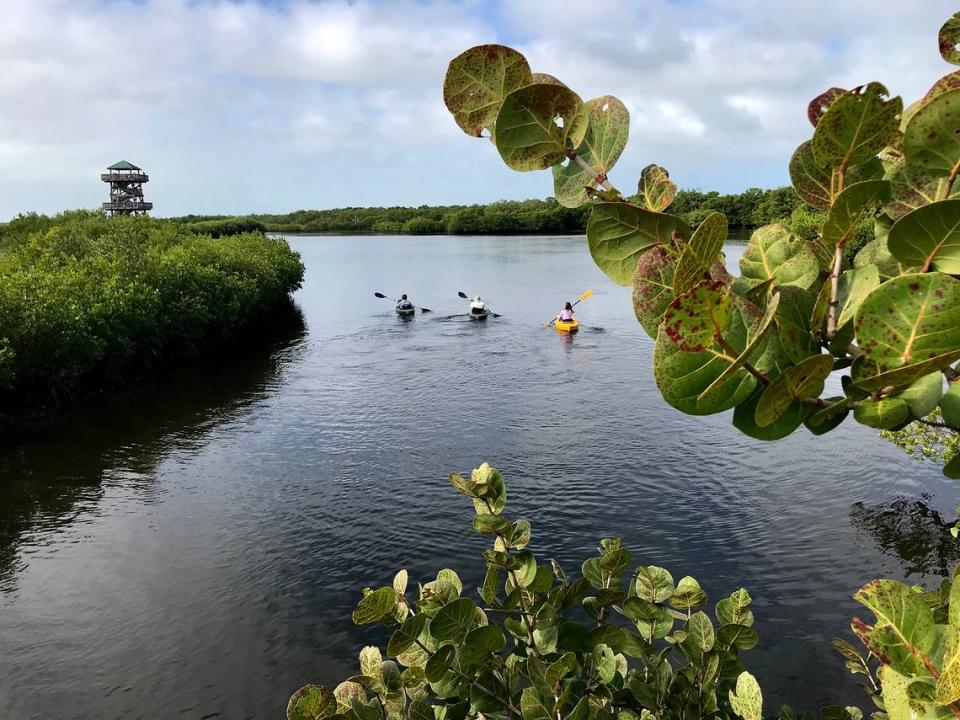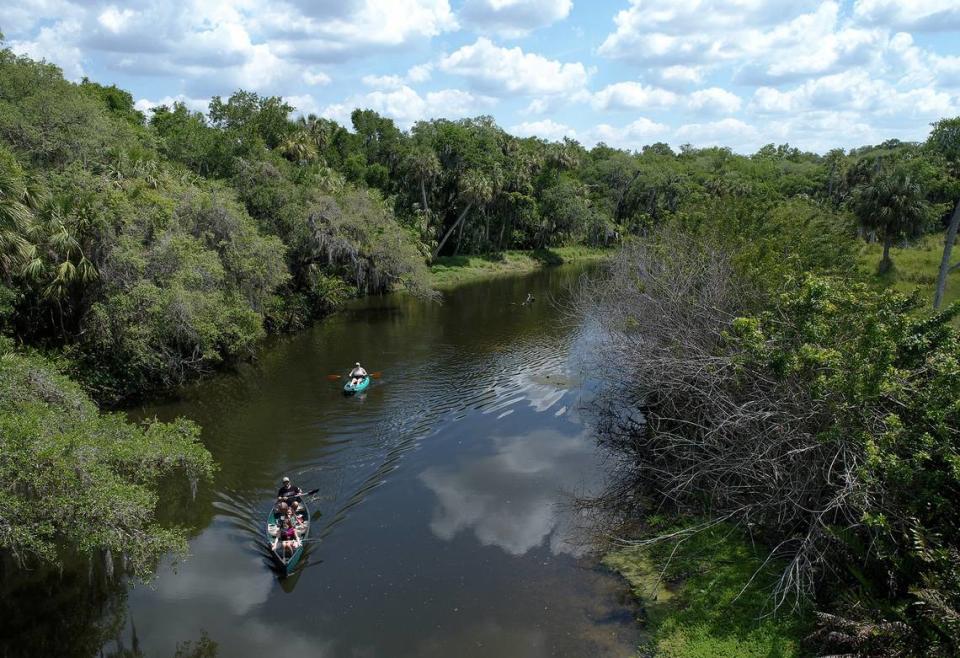Florida environmental agency asks for new rule to cut water pollution from new housing
The Florida Department of Environmental Protection is proposing an update to statewide stormwater rules that aims to reduce water pollution allowed from new developments by about 50%.
FDEP anticipates permitting over 14,000 development projects that could create stormwater runoff in the next five years. As stormwater drains into local waterways, the water tends to collect nutrients from fertilizer and organic matter that can have a negative impact on water quality.
Those nutrients can create harmful algal blooms, such as red tide and blue-green algae, which have plagued Florida in recent years.
But development and engineering interests are pushing back on the proposed change, which ultimately must be approved by the Florida Legislature.
The rules are being updated at the direction of 2020’s Clean Waterways Act, a bipartisan piece of legislation that calls for tightening water pollution standards around the state.
“Stormwater-related pollution represents one of the largest potential contributors of nutrients throughout the state,” FDEP says.
Advocates of the proposed rules hope they can help curb toxic algae blooms and seagrass die-offs occurring across Florida and contribute to restoring the health of water bodies.
FL agency wants better pollution rules
“The proposed regulations address stormwater pollution at its source, and that is the most cost-effective strategy,” said Beth Alvi, director of policy for Audubon Florida during a public hearing on Wednesday. “Further, it appropriately places the financial burden on the activity that is creating the source of nutrient pollution.”
In its 2022 water quality assessment, FDEP found that over half of the Florida water bodies it surveyed were polluted, including over 15,000 miles of rivers and streams, over 2 million acres of lakes and 3 million acres of estuaries.
Excessive levels of nutrients, bacteria and dissolved oxygen were the top contributors.
“Today, the discussion before the Florida legislature is about nutrients,” said John Coates, a project manager with FDEP during Wednesday’s hearing.
Coates said it is time to update state standards based on the latest science.
The new rule would establish uniform water treatment standards for development projects. They would require the removal of 80-95% of nitrogen and phosphorous from stormwater runoff from new development sites. By comparison, the state’s current standards reduce nitrogen loads by about 33% and phosphorous loads by 69%, FDEP estimates.
For redevelopment sites, the new standards would call for 45-60% load reductions of nitrogen and 80-95% of phosphorous.
Developers would also face additional requirements, such as providing calculations that demonstrate how their stormwater systems will meet the new standards as well as more frequent inspections of stormwater treatment systems.

Development interests oppose change
As the stormwater rules move through the public hearing process, development and engineering interests are countering with their own proposals. They argue that the new standards are difficult — if not impossible — to meet and would drive up costs for the industry and consumers.
“The proposed rules undermine statewide development goals such as density, affordability, and increased capacity,” Florida Home Builders Association CEO and chief lobbyist Rusty Payton wrote in a letter to FDEP. “The proposed nutrient load reduction requirements will lead to an increase in the need for on-site stormwater treatment areas. Dedicating additional space to stormwater treatment directly reduces the number of units that will be available for residents.”
“Considering the cost of land and the potential 15-25% of land that would have to be set aside ... that would make the entire development unfeasible,” said Jeffrey Littlejohn, an environmental legislative consultant for Florida Engineering Society, during Wednesday’s meeting.
Littlejohn argued the new rules would discourage redevelopment and lead to more urban sprawl.
An alternative proposal submitted by the Florida Engineering Society would entirely eliminate FDEP’s percentage-based minimum water treatment standards from the rules. Instead, developers would only be required to show a net improvement in stormwater quality compared to pre-development levels.
But according to FDEP, that could be a step backward. The alternative plan would be weaker than current standards in some cases, FDEP staff highlighted during a presentation Wednesday. The result could be a potential increase in nutrient pollution from housing and industrial developments.
State considers water quality compromise
FDEP is now preparing a revised rule proposal and cost estimate, which will be followed by a 20-day challenge period before the final rules can be considered by the Legislature.
Staff said they are also reconsidering alternative criteria proposed by a Technical Advisory Committee that weighed in on the rulemaking process between 2020-21.
The committee’s recommended standards offer a middle ground. They would be weaker than FDEP’s proposed rule, but stronger than current standards, calling for a required 55% reduction in nitrogen loads and 80% in phosphorous, FDEP said Wednesday.
Updates on the rulemaking process are posted to FDEP’s website at floridadep.gov/water/water/content/water-resource-management-rules-development.


